
图片来源:Warisboring.com
2017年2月10日,调查性报道中心(Center for Investigative Reporting)发布了一份令人不安的美国国防造船业的报道,记录了美国海军和海岸警卫队与造船商之间价值数十亿美元的施工合同却只有松散的安全标准。
文章毫不避讳地表明该行业问责制的缺乏,以及主要造船公司与美国的“相互依赖”关系。
报道的焦点集中在VT Halter造船公司。2009年11月,该公司在密西西比州Escatawpa的造船厂发生了一起致命性爆炸事件。美国职业安全与健康管理局(OSHA)起初罚了该公司130万美元。由于违规导致的这场事故致使两名工人死亡,其余五人受伤。但之后罚款被降至83.7万美元。
报道发表刚刚一个月后,美国海军就将一笔价值8700万美元的合同给了VT Halter,内容是建造一艘海洋考察船。自那以后,该公司因作业安全和环境违法曾被监察机构点名,但该公司现在仍在接收来自联邦的合同。
通用动力公司(General Dynamics)、亨廷顿英格尔斯工业公司(Huntington Ingalls Industries)和奥斯塔美国公司(Austal USA)是政府的三大造船承包商,它们都曾有过不良行为记录。2012年,职业安全与健康管理局就曾因缅因州巴斯造船厂的违规行为向通用动力开出17.1万美元的罚单。
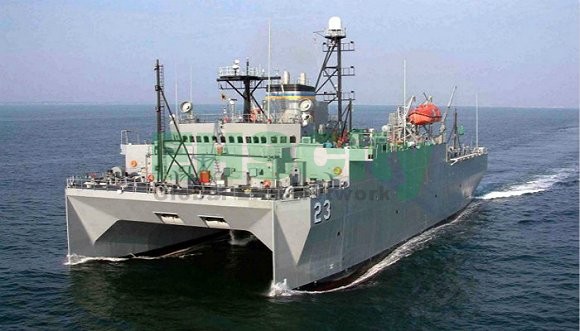
调查性报道中心发现,美国海军对安全方面的关注极其缺乏。一位海军发言人告诉记者Jennifer Gollan:“关于工厂的安全问题,我们并不是那些工厂管理者,所以我们也不知道。”
Gollan发现,在2005至2015年间,造船厂和修理厂曾发生76起意外死亡事故,至少有四分之一的死亡事故发生在那些与联邦政府签订合同的船厂。她警告说,在新任总统特朗普的支持下,海军准备大规模扩张舰队,在这种情况下,造船厂的工作状况会变得更加糟糕。
多种因素造成了这种可怕局面。
第一,政府在制造或维修船只方面的选择太少。出于国家安全原因,大部分工作必须交给美国本土公司完成。
其中,只有少数的公司能够达到政府的要求。部分造船公司的营收过分依赖联邦合同,迫于财政压力,他们经常走捷径,于是带来了危机四伏的工作环境。
第二,在工伤和意外事故方面,造船工人及其家庭获得的法律援助有限。相比安全问题,美国海军和海岸警卫队更关心产量的问题。
相反,问责制很大程度上依赖像职业安全与健康管理局或者环保局这样的机构。但这些机构征收的罚款相比价值数十亿美元的合同来说,简直就是九牛一毛。
第三,政府官员评估和遴选承包商的过程受到联邦法规的约束,但联邦法规没有足够重视公司的安全记录。前总统奥巴马曾尝试补救这一漏洞,通过其颁布的“公平工资和安全工作场所”行政令要求公司揭露劳动违规行为。
但在2016年,一位联邦法官终止了这项要求,国会目前也准备将其全面废除。不过,许多公司会在联邦签约者表现与诚实信息系统(Federal Awardee Performance and Integrity Information System)中披露安全健康违规行为。在此系统下,签订合同前,机构必须先行审核。
调查性报道中心希望,上述报道能在美国引起改革。他们认为,在消耗数十亿美元保护国家安全的同时,造船的过程却也夺去了不少工人的生命,这真是个极大的讽刺。
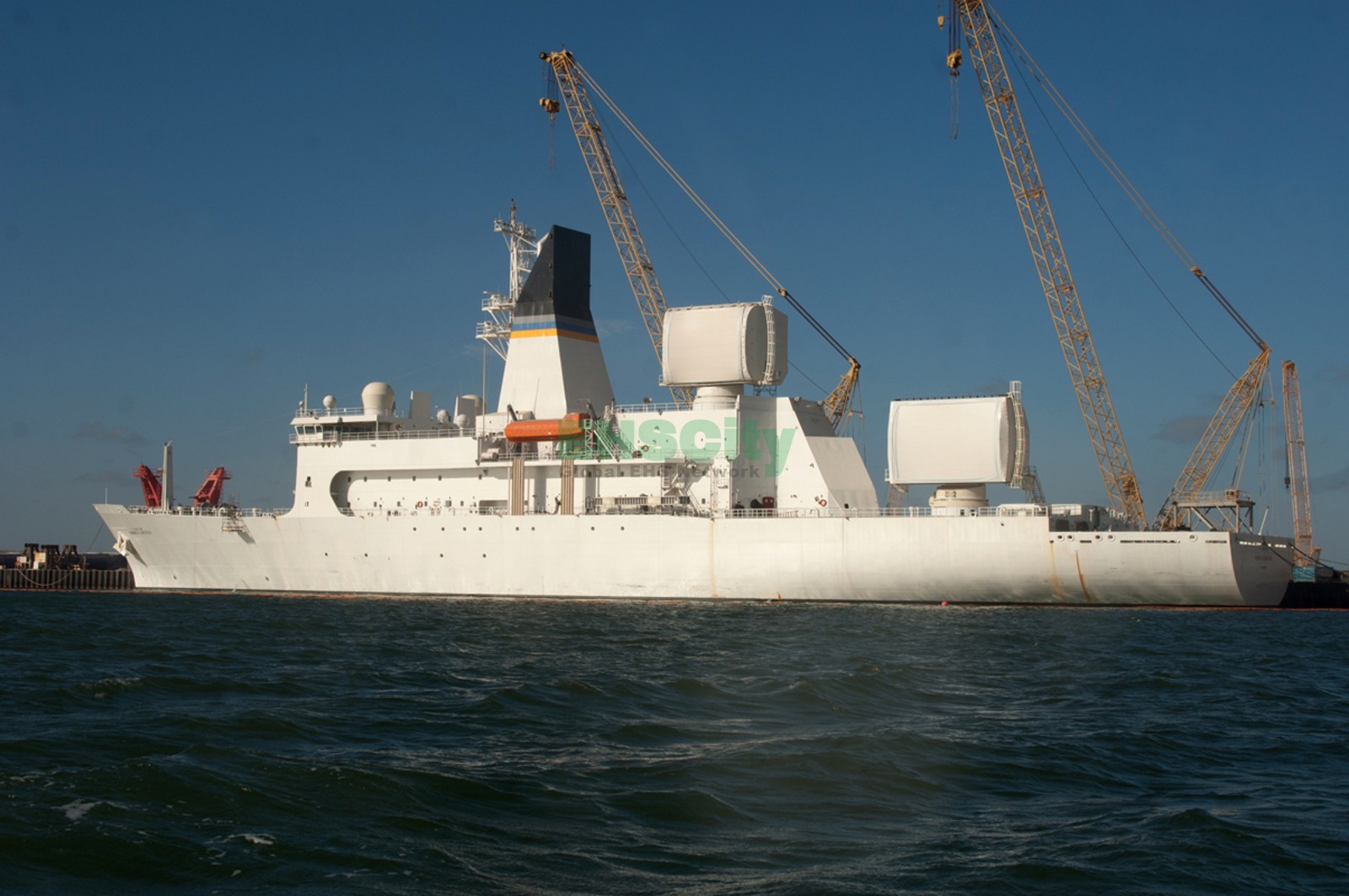
Workplace safety at U.S. shipyards is a growing concern
by NEIL GORDON
On Feb. 10, 2017, the Center for Investigative Reporting published a disturbing exposé of the national defense shipbuilding industry, documenting how the U.S. Navy and Coast Guard award billions of dollars in contracts to shipbuilders with lax safety standards. The article starkly illustrated the lack of accountability in the industry and the “unhealthy codependency” between the major shipbuilding companies and Uncle Sam.
The article focused on one company, VT Halter Marine and a deadly explosion at its Escatawpa, Mississippi shipyard in November 2009. The Occupational Safety and Health Administration initially fined the shipmaker $1.3 million for violations relating to the explosion, which killed two workers and injured five others. OSHA later reduced the fine to $837,000.
One month after the explosion, the Navy awarded VT Halter an $87 million contract to build an oceanographic survey ship. Since then, regulators have cited the company for other workplace safety and environmental violations, yet it is still receiving federal contracts.
The government’s top three shipbuilders — General Dynamics, Huntington Ingalls Industries, and Austal USA — also have documented histories of misconduct. In 2012, OSHA hit General Dynamics with a $171,300 fine for violations at its shipyard in Bath, Maine.
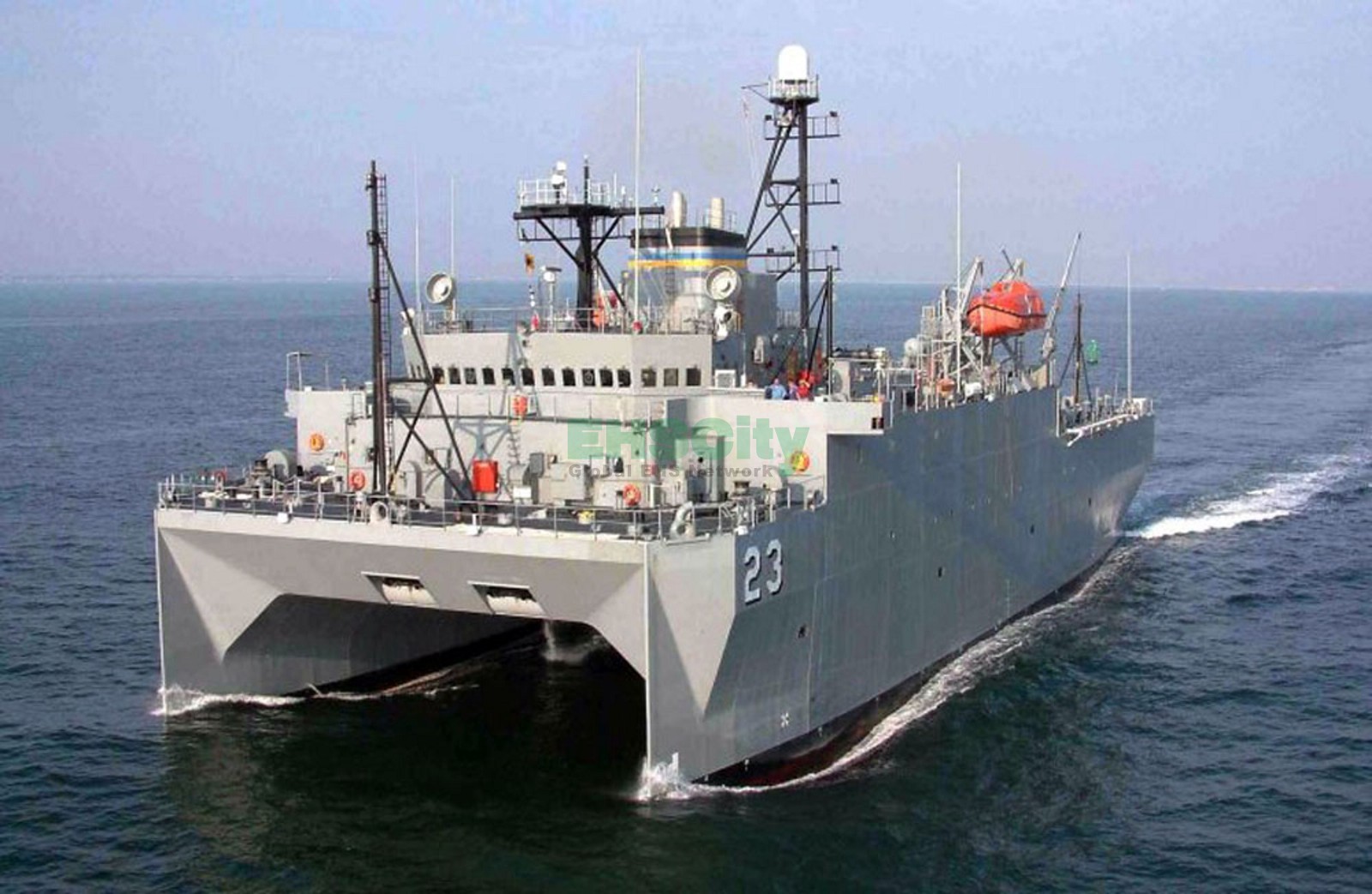
The Center for Investigative Reporting found a startling lack of concern for safety on the part of the Navy. “We are not the overlords of private shipyards when it comes to workplace safety,” a Navy spokesman told reporter Jennifer Gollan.
Gollan found that from 2005 through 2015 there were 76 fatalities in the shipbuilding and repair industry, with at least a quarter of those deaths occurring at shipyards owned by federal contractors. She warned that working conditions at these shipyards could get worse as the Navy, with support from President Trump, prepares to significantly expand the size of its fleet.
Several factors have created this dire situation.
First, the government has few alternatives when it comes to building or repairing ships. For national security reasons, the US-based companies must perform most of the work.
Among them, only a small number are able to meet the government’s needs. Financial pressure on these shipbuilders, who heavily depend on federal contracts, often leads to shortcuts that create hazardous work environments.
Second, shipyard workers and their families have limited legal recourse for workplace injuries and fatalities. The Navy and Coast Guard are more concerned with production than safety.
Instead, accountability is largely up to agencies like OSHA and the Environmental Protection Agency. Those agencies levy fines, which amount to a slap on the wrist to companies with billions of dollars in contracts.
Third, federal regulations governing how government officers evaluate and select contractors under-emphasize companies’ workplace safety records. Pres. Barack Obama tried to remedy this with his Fair Pay and Safe Workplaces executive order, which required companies to disclose labor violations.
But in 2016, a federal judge blocked the disclosure requirement and Congress is now moving to abolish it entirely. Nevertheless, companies are disclosing health and safety violations in the Federal Awardee Performance and Integrity Information System, which agencies must check before awarding contracts and grants.
We hope the Center for Investigative Reporting’s account sparks reforms. There is a cruel irony in spending billions of dollars to keep our country safe, yet simultaneously endangering the lives of workers in the shipbuilding industry.
This article originally appeared at the website of the Project on Government Oversight.
Bram Ates felt the urge to vomit. A chemical stench filled the engine room of the tugboat in a sprawling Mississippi shipyard.
Ates scrambled over to an oval hole in the floor and peered into the dark abyss. Below him, two men were crawling through cramped steel boxes laid out like coffins. They had been told to wipe the inside of the hull with paint thinner.
“Look, y’all need to get out of that tank,” Ates screamed.
He heard hissing. A tangerine fireball erupted through the hole and catapulted him across the boat. The deafening boom reverberated through the rooms of a Super 8 motel more than 2 miles away.
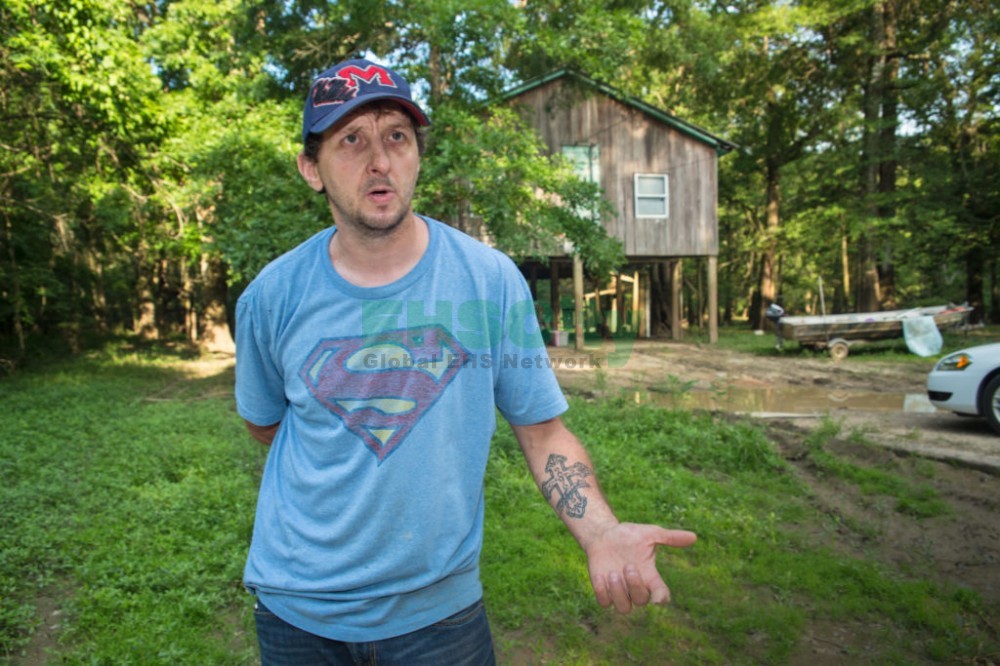
Bram Ates talks outside his Lucedale, Mississippi, home about the shipyard explosion that killed two co-workers and burned half of his body.Credit: Julie Dermansky for Reveal
When he came to, he was kneeling. His Wrangler denim shirt was on fire. The skin on his hands and legs had been stripped like corn husks, baring muscle and bone. Blood gushed from his fingertips. It was Ates’ fourth day on the job, the Friday before Thanksgiving 2009. He emerged from a medically induced coma three weeks later and learned that third-degree burns covered half his body. Four other workers aboard the Achievement also were injured in the blast. The two men Ates had tried to save were dead.
A month after the explosion, federal safety investigators still were combing through the charred boat at VT Halter Marine Inc.’s shipyard in Escatawpa, Mississippi, when the shipbuilder hit the jackpot: The U.S. Navy awarded it an $87 million contract to build a hulking 350-foot ship that would gather ocean data to improve submarine warfare.
If Navy officials had waited five more months for the Occupational Safety and Health Administration to finish its investigation, they would have learned that one of their prized contractors sent its workers into what it knew was a potential death trap.
VT Halter’s financial triumphs offer a striking example of how the Navy and other federal agencies award big business to shipbuilders with proven records of putting workers in harm’s way.
For private shipbuilders, many of whom depend on Navy and Coast Guard contracts to remain profitable, there are no long-term consequences for their safety problems, an investigation by Reveal from The Center for Investigative Reporting has found.
VT Halter stands out for its deadly accidents. But since October 2008, the Navy and Coast Guard’s seven major private shipbuilders have received more than $100 billion in public money despite citations for serious safety lapses that have endangered, injured and, in some cases, killed workers, Reveal found in its investigation, which included interviews with dozens of workers and a review of hundreds of pages of records from 10 states.
So while shipyards such as VT Halter are slapped with fines regularly by one arm of the federal government, they are rewarded routinely by another federal agency that pays little attention to companies’ safety records.
Shipbuilding is a dangerous industry. From 2005 through 2015, a total of 76 workers in the private shipbuilding and repair industry were killed. At least a quarter of those deaths involved private shipyards that are regular recipients of federal contracts. Shipyard workers face an injury and illness rate that is roughly 80 percent higher than construction jobs, according to the most recent federal labor figures.
WORKERS SUFFER, BUT NOT SHIPBUILDERS
Two of the Navy and Coast Guard’s major private shipbuilders have been cited for cases involving worker deaths. The other five have had serious safety lapses, according to OSHA citations from Oct. 1, 2008, to the present. However, these safety issues have not affected the companies’ ability to collect federal shipbuilding and repair contracts.
| SHIPBUILDER | EXAMPLES OF SAFETY PROBLEMS | FEDERAL CONTRACTS |
|---|---|---|
| General Dynamics | Foot amputation, electrical shock, crane collision | $55.9B |
| Huntington Ingalls Industries * | Worker electrocuted to death, potential amputations | $38B |
| Austal USA | Fall and electrical hazards, workers under suspended loads | $6.4B |
| Bollinger Shipyards | Workers exposed to suffocation, explosion and fire hazards | $1.8B |
| VT Halter Marine | Explosion deaths, crane tipover, serious injuries | $670M |
| Fincantieri Marinette Marine | Electrical shock, fall hazards from lack of guardrails | $367M |
| Eastern Shipbuilding Group | Workers exposed to cancer-causing fumes, fall and electrical hazards | $133M |
| Sources: Federal contracts, 2009-2016 fiscal years; OSHA reports, Oct. 1, 2008-present *Northrop Grumman spun off Huntington Ingalls as a separate company in 2011. |
||
Failures by the companies make it more dangerous than it has to be. And the situation is about to get worse.
In his first week in office, President Donald Trump announced his plans for what could be the largest expansion of the Navy’s fleet since the Reagan years.
“I’m signing an executive action to begin a great rebuilding of the armed services of the United States, developing a plan for new planes, new ships, new resources and new tools for our men and women in uniform, and I’m very proud to be doing that,” Trump said.
During his campaign, he promised to supersize the Navy’s fleet from 274 ships to 350.
With extra business comes more risks for workers. But there is no increase in oversight. In fact, there’s nothing precluding the Navy from handing out contracts to shipbuilders with safety violations. The Navy and OSHA have no formal system for sharing information on accidents. It’s unclear whether Navy officials are even aware of the safety lapses. However, they could easily look up the information on the public database OSHA keeps on its website.
Confronted by Reveal about their apparent lack of interest in worker safety, Navy and Coast Guard officials said it wasn’t their job.
“We are not the overlords of private shipyards when it comes to workplace safety,” said Dale Eng, a spokesman for the Navy’s Naval Sea Systems Command, which oversees ship construction.
The uncomfortable truth is that the Navy has few alternatives when it comes to who builds its ships. It can work only with U.S.-based companies in large part because of national security concerns and because shipbuilding provides a large number of relatively high-paying jobs in regions where shipyards are the major employers.
That creates an unhealthy codependency: Just a handful of companies are equipped to build the massive boats the government needs, and the shipbuilding industry relies on the military for the majority of its revenue.
But while the military and the shipyards each get something out of it, workers remain at a deadly disadvantage. Under a 90-year-old federal law, shipyard workers generally can’t sue their employers, which leaves the shipyards accountable only to OSHA.
In response to Reveal’s findings, Sen. Elizabeth Warren, D-Mass., said that if federal contractors can’t keep their workers safe, they shouldn’t get another dollar of government money.
“When the government pays federal contractors hundreds of billions of dollars a year – whether to build a giant ship for the Navy or to run a concession stand at a national park,” said Warren, a member of the Senate Committee on Health, Education, Labor and Pensions, “the jobs they create should be good, safe jobs.”
An incentive to skimp on safety
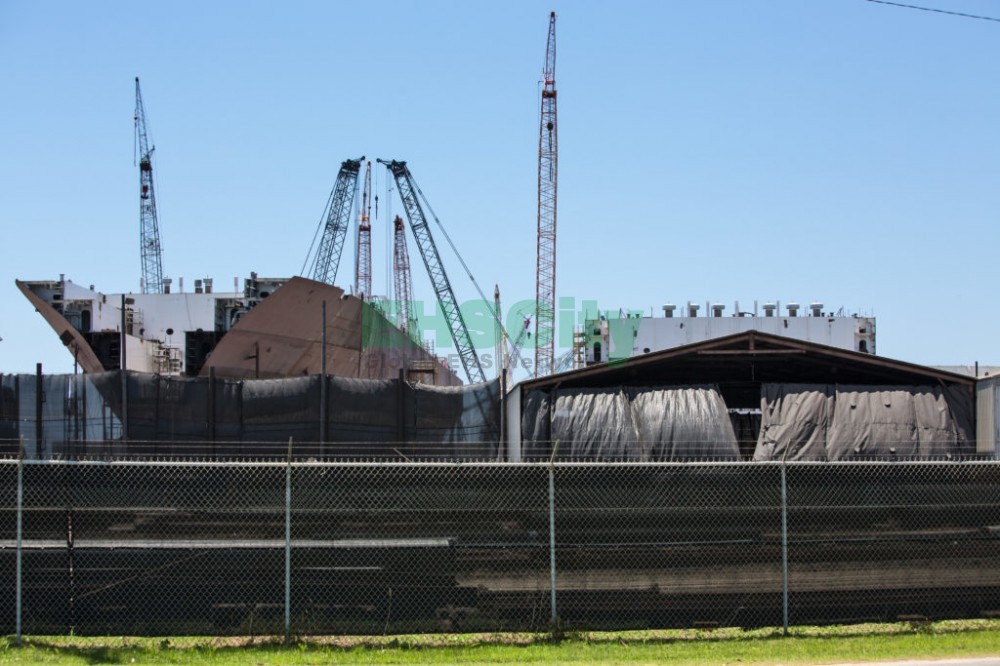
Since October 2008, VT Halter Marine and six other private shipbuilders have been awarded more than $100 billion in contracts by the federal government despite citations for serious safety violations.Credit: Julie Dermansky for Reveal
Joseph Pettey had noticed something strange that day at the VT Halter shipyard. He was supposed to paint in the tugboat’s crawl space, but he realized there were no fans.
He said he told his boss, Danny Cobb, that he wouldn’t do the work without ventilation. “He said, ‘Well, if you don’t spray it, you’re fired,’ ” Pettey said.
The 28-year veteran of shipbuilding didn’t want to get fired. On the Gulf Coast in Mississippi, shipyard jobs pay some of the highest wages for workers without a college degree. But he also didn’t want to breathe in toxic paint fumes – so he grabbed a fan from another ship and headed to the tugboat.
That’s when it exploded. He watched men running from the boat, on fire.
Pettey told Reveal that in the months after the accident, Cobb directed him to go work at VT Halter’s other shipyards every time OSHA inspectors appeared.
“Danny told me if I ever had to talk to them, he told me to limit my answers and don’t go into detail,” Pettey said.
Industrial fans and explosion-proof lights that could have prevented the blast were right there in the shipyard, Pettey told Reveal. But they were stashed away in big toolboxes. “This had been going on for years,” he said.
Cobb had a reason not to open them, Pettey said. Top managers at VT Halter earned bonuses if they came in under budget, several former workers said. Pettey said Cobb kept the fans, lights and other safety equipment locked up so he wouldn’t have to buy more.
“That comes out of your paint budget. If you go over budget, you don’t get bonused out,” he said.
Robert Gillett, another painter who was working nearby at the time of the explosion, independently verified his account. Fernando Ochoa, a third painter who was there that day, said he saw the explosion-proof lights locked in the toolboxes.
When reached by phone for comment, Cobb scoffed. “He don’t know what he’s talking about. I didn’t keep that stuff locked up. That’s crazy,” he said before hanging up.
OSHA ultimately placed the blame for the explosion squarely on VT Halter. Even though the company had the knowledge and equipment to protect its workers, it put them in grave danger, the agency’s director said. The company had dispatched the men into a confined space with flammable vapors without testing the air. It didn’t give them explosion-proof lights. As the men worked, toxic fumes reached more than 600 times the legal limit, according to OSHA.
Mona Dixon, the VT Halter employee who oversaw safety at the company’s three shipyards in Mississippi at the time, told investigators that she assumed air monitoring wasn’t required, documents show. Her qualifications for the job consisted of a safety course at Warren National University, according to her sworn deposition. The online school was a suspected diploma mill that folded in 2009 after failing to earn accreditation. Dixon didn’t respond to requests for comment.
In May 2010, in a statement announcing a $1.3 million fine against the company, Labor Secretary Hilda L. Solis said: “This was a horrific and preventable situation. The employer was aware of the hazards and knowingly and willfully sent workers into a confined space with an explosive and toxic atmosphere.”
VT Halter ultimately settled with OSHA, agreeing to pay a reduced fine of $860,500 and acknowledging it willfully violated 12 safety rules in the 2009 tugboat explosion that killed two men.
One of them, Alexander Caballero, had come to the shipyard from Puerto Rico in the hope of eventually becoming an underwater welder. He was 25. For Dwight Monroe, the job was a shot at redemption. The 52-year-old was saving up to move into his own apartment after serving more than 25 years in prison for rape.
Just a month before the explosion, a contract worker plunged 40 feet to his death at a VT Halter shipyard in Pascagoula, Mississippi. Andre Magee Jr. slammed into the bottom of a dark, wet cargo tank on a barge that was under construction. The 23-year-old had no safety harness or handrails. He left behind 4-year-old twins. The company reached an undisclosed settlement with Magee’s family.

Clyde Payne, retired head of OSHA’s Jackson, Mississippi, office, oversaw the investigation into the fatal tugboat accident at a VT Halter shipyard. Payne says he was shocked to learn that the government was still doing business with the private shipbuilder.Credit: Julie Dermansky for Reveal
Clyde Payne, who oversaw the OSHA investigation into the tugboat accident and has since retired, was shocked to learn that the government had continued doing business with VT Halter after the explosion.
“We’re talking about human life here, not just dollars and cents,” he said. “It sends the wrong message.”
Yet the course of business continued apace. In the seven years since the accident, the Navy has awarded VT Halter at least $345 million in contracts, a figure that makes the OSHA fines seem like a small tax.
A VT Halter spokeswoman declined to make the company’s chief executive available for an interview and did not respond to a half-dozen requests by phone, email and text requesting an interview with another company official.
A lack of consequences for contractors

A camera captures the crane accident at VT Halter’s Pascagoula, Mississippi, shipyard that severely injured John Williams Jr., in June 2014.Credit: VT Halter
John Williams Jr. was known simply as “Preacher” among his co-workers. He often arrived at work early and prayed in his truck for God to keep his co-workers safe.
On a muggy afternoon in June 2014, he was helping another crane operator at VT Halter’s Pascagoula, Mississippi, shipyard move a 250-ton bow so it could be attached to the hull of an offshore supply vessel.
One crane pulled ahead of the other. Williams’ crane tipped forward. He furiously worked the levers. Behind him, massive weights meant to balance the crane’s load slipped, pummeling the cab and hurling him through the windshield. Williams lay crumpled in a ball, gasping for air. His pelvis was broken. A pocket-sized Bible that he kept in the cab of the crane lay nearby in the dirt.
“I leaned him back, and most of the right side of his face was gone,” said David Smith, the other crane operator.
“He was always very cautious and done everything by the book like we were supposed to,” he said. Four other workers also were injured.
Williams lost part of his skull and is now blind. He is 63 but has the mental capacity of a child. He requires 24-hour nursing care. But he is grateful to be alive.
John Williams Jr., of Irvington, Alabama, lost his eyesight and part of his skull in a June 2014 crane accident at VT Halter’s Pascagoula, Mississippi, shipyard.Credit: Julie Dermansky for Reveal
“Heavenly Father Lord, we’re thankful for this day and for life,” he says in prayer each night before going to bed.
OSHA fined VT Halter $22,000 for allowing Williams to work without a functioning sensor, which tells crane operators how much weight their cranes are lifting, among other violations. The company had long known of the problem: In the six months leading up to his accident, Williams had noted the sensor was broken in weekly reports submitted to the shipbuilder. VT Halter re-installed the sensor two days before the tipover but did not test whether it was working properly, according to OSHA.
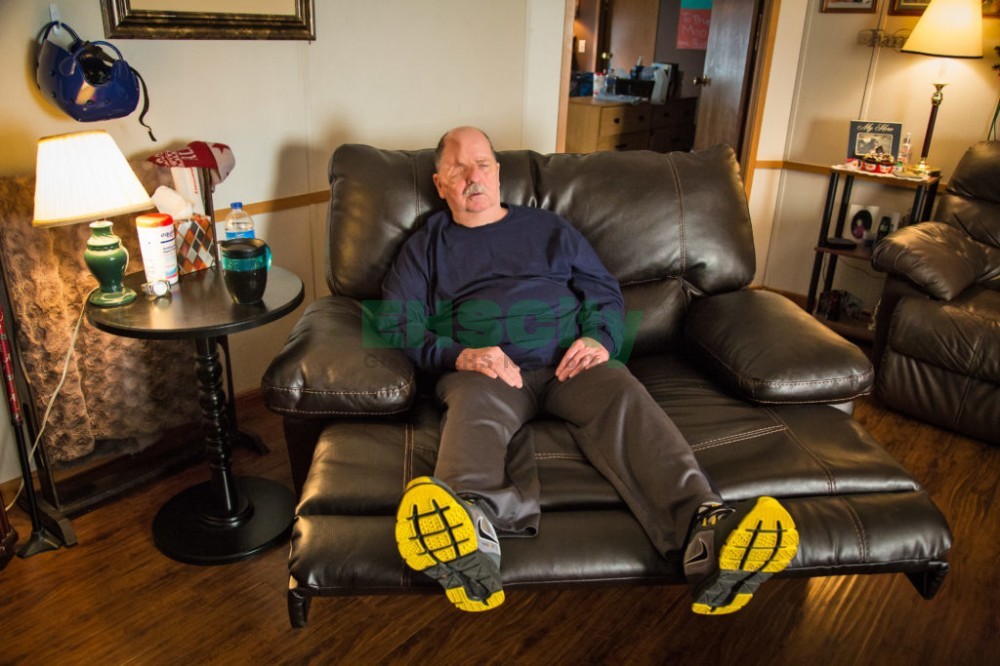
In October, a jury in Mississippi found that VT Halter bore the most responsibility for the accident. The jury’s verdict found Manitowoc Cranes LLC, the crane manufacturer, should bear 40 percent of the responsibility, and Williams, 10 percent. Manitowoc was ordered to pay $3.4 million to Williams and his wife.
Manitowoc has requested a new trial. It denied liability, saying the accident was VT Halter’s and Williams’ fault. VT Halter will pay no part of the judgment because federal law precluded Williams from suing it for negligence.
Most American workers face the same limitations. In the 1920s, shipyard workers joined many others in accepting a tradeoff under federal law: In exchange for severely limiting their ability to sue their employers for work accidents, they could collect prompt, if limited, payments for injuries.
In a quirk of law, though, as soon as that ship heads to sea, workers aboard enjoy expansive protections. They can sue their employer if they so much as slip and fall on a wet deck.
“If shipyards were getting sued and they were made to pay a penalty, believe me, they would do more to protect their workers,” said Michael Huey, a workers’ compensation attorney for shipyard workers in Mobile, Alabama.
Beyond VT Halter, chronic safety problems have plagued many of the top private shipyards building and repairing vessels for the American military. Some companies have made no secret of their contempt for regulators.
At Basic Marine Inc. in Michigan, a federal inspector found inoperable brakes on two cranes. The company used the cranes anyway. When federal inspectors visited the shipyard in 2011, Basic Marine’s president sent workers home. The investigators reported that he “kept yelling for us to get the F@#% out.” He told them he would “stick a warrant up our asses,” OSHA investigators wrote.
Part of the problem is that the Navy does not regulate workplace safety in private shipyards. The Navy’s Naval Sea Systems Command, known as NAVSEA in military circles, oversees ship construction and repair. NAVSEA stations about 1,500 staffers at and near private shipyards across the country. Their job: making sure the shipbuilders deliver quality vessels within budget and on time. They are explicitly told they do not enforce federal workplace safety laws for private employees.
“The contractor is responsible for providing safe working conditions for their personnel,” their operating manual states.
When Navy officials spot major hazards, they may report them to the shipbuilders themselves and consider them when awarding contracts. But the Navy’s record of awarding lucrative contracts to companies with repeated accidents suggests it places little emphasis on these concerns.
At least one NAVSEA executive has tried to challenge the laissez-faire approach. In June 2010, dozens of safety officials from private ship repairers sat down to hear a presentation from Jim Brice, then a NAVSEA safety director. He warned that NAVSEA workers and supervisors “are routinely accepting dangerous working conditions because ‘it’s always been that way.’ ”
“Managers do not give safety same level of attention as cost and schedule,” his slides state. “Work environment is poor (e.g., too many safety deficiencies, managers not correcting deficiencies, lack of consequences leads to accepting the conditions).”
The Coast Guard says its focus is on the final product. “We’re making sure that the taxpayer is getting the best asset on time and on budget that meets the requirement of the contract,” said Brian Olexy, spokesman for the Coast Guard Acquisition Directorate.
Federal regulations require that the government contract only with companies that show up and do the job. But the federal contracting system was not designed to evaluate companies’ past labor violations.
President Barack Obama had tried to address this in his second term by requiring companies seeking federal contracts of $500,000 or more to disclose labor violations from the past three years. But in October, a federal judge in Texas blocked the rules from taking effect. On Feb. 2, the House of Representatives voted to invalidate the rules and prevent future administrations from developing similar measures. The Senate is expected to take a similar vote in the coming weeks.
When the Navy follows through on Trump’s orders to expand, its options for picking and choosing shipbuilders will be limited. Since World War II, the number of shipyards in the U.S. has dwindled as commercial shipbuilders flocked to China and South Korea, where labor is cheaper. Combined with the restriction that U.S. warships be built at home, that leaves eight major shipyards for the Navy, some of which are wholly dependent on the Navy for business.
The financial pressures on shipbuilders can be intense. Shipbuilders must invest enormous capital to keep up their facilities and machinery. In general, they’re also heavily reliant on a few contracts each, and they may be building just a few ships a year. Several of the Navy’s major shipbuilders are one contract away from being “not viable,” Sean Stackley, now the acting secretary of the Navy, told a Senate subcommittee in 2015.
Shipbuilders’ culture of speed
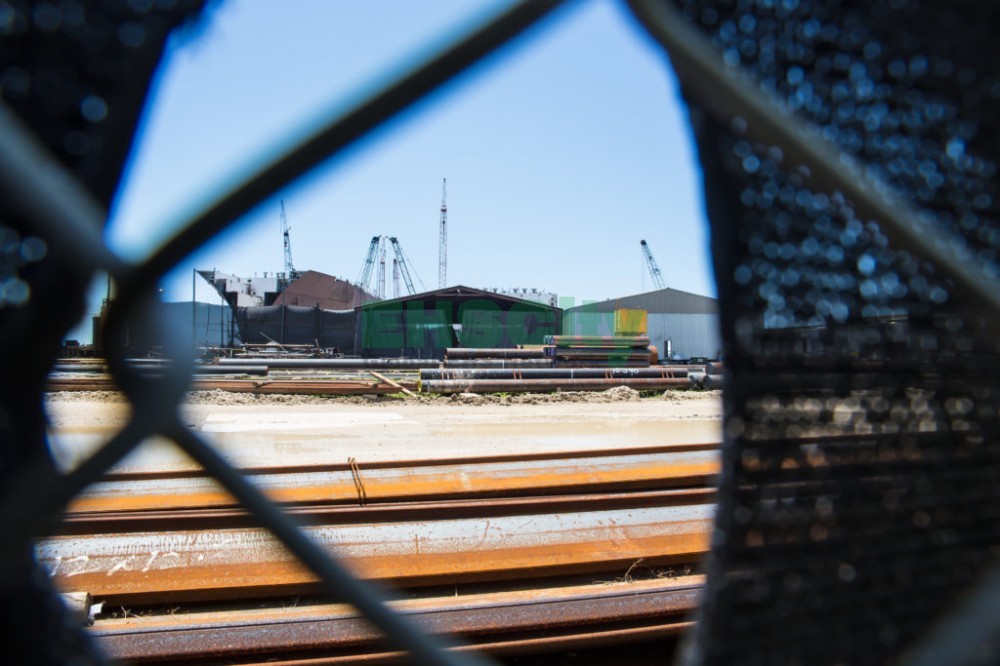
VT Halter Marine’s Pascagoula, Mississippi, shipyard, seen through a hole in fencing fabric.Credit: Julie Dermansky for Reveal
The ruthless drive to build boats quickly and turn a profit leads to dangerous decisions, dozens of shipyard workers told Reveal. Speed often pays – for the top brass. But it can be deadly for workers.
LeeBoy Thibodeaux of Pascagoula, Mississippi, was always smiling and often greeted his co-workers with a cheerful refrain: “Good morning, America!”
In January 2012, he climbed a ladder to refill a hulking pot with Black Beauty, an abrasive material workers use to clean boats. It was dirty and grueling, but Thibodeaux wanted the work and, in particular, the health benefits to care for his ailing wife. At 66, he was nearing retirement.
OSHA requires companies to have specific written procedures for working with these pressurized pots. But VT Halter had none. A manager had been explicitly warned about two broken bolts that were supposed to help keep the lid on the pot, said Roscoe Stallworth Jr., who was a sandblasting supervisor at the time.
The manager, he said, ignored the warnings. Employees also needed to be properly trained to ease the enormous pressure in the pots, but Stallworth said the company didn’t want to slow production or spend money on repairs.
That January morning, the aging pot’s 20-pound cast-iron lid came loose. It rocketed into Thibodeaux, shearing away his face and killing him instantly. His hard hat sailed over a high sandblasting curtain and landed 60 feet away. After Thibodeaux’s death, William Skinner, then the CEO of VT Halter, told The Mississippi Press, “We really don’t have any facts at this time.”
But the facts were obvious to Stallworth.
Had the bolts been working, Stallworth said, “I’m almost positive it wouldn’t have killed him. They didn’t take the time to train people because it cut into the money they could make. It’s all about profit. It’s go, go, go.”
The next day, the shipyard’s workers resumed work. VT Halter replaced its sandblasting pots soon after, Stallworth said. OSHA imposed a $22,300 fine against the company for the accident and other problems. The agency also said Thibodeaux failed to depressurize the pot before opening the lid.
“When someone is killed, it really doesn’t affect the company,” said Beverly Williams, one of Thibodeaux’s daughters, now 43. “They’re going to keep rolling.”
Dealing with the fallout of the blast
Bram Ates escaped death in November 2009 when the tugboat exploded in VT Halter’s shipyard. Now, the 36-year-old is fighting to survive.
The South’s humidity is a curse. He can overheat quickly. The burns damaged his nerves and sweat glands, making it difficult for him to control his body temperature. Scars wrap around his body, branding him for life.

Bram Ates shows the skin grafts on the backs of his hands. Ates used his hands to shield his face when an explosion erupted at a VT Halter shipyard.Credit: Julie Dermansky for Reveal
Unable to sue VT Halter, Ates received $100,000 in workers’ compensation, roughly what he’d earn in three years in the shipyards. He tried to use that money to set himself up for life, buying a dilapidated home to renovate. But he’s out of money.
No shipyards will hire Ates, deeming his injuries a liability, he said. He takes the odd roofing job. He also fishes in the Pascagoula River, which gurgles near his withered brown-and-aqua house on stilts. His home sits cold and empty, at the end of a dusty dirt road surrounded by pine trees. His power was shut off when he fell behind on his bills. For now, he sleeps on a recliner at his mother’s house.
Suffering from post-traumatic stress disorder and crippling guilt that he could not save his co-workers, Ates is anxious and fidgety. His marriage collapsed after the accident.
“I assumed Halter would keep me safe,” he said. “It turned out I was wrong.”
Now, nightmares jolt him awake. He is sometimes fearful of fire. Strangers stare at the backs of his hands; skin grafts left dozens of bumps resembling sesame seeds. He storms over to people who puff on cigarettes as they pump gas.
The vapors, he shouts, could explode.

